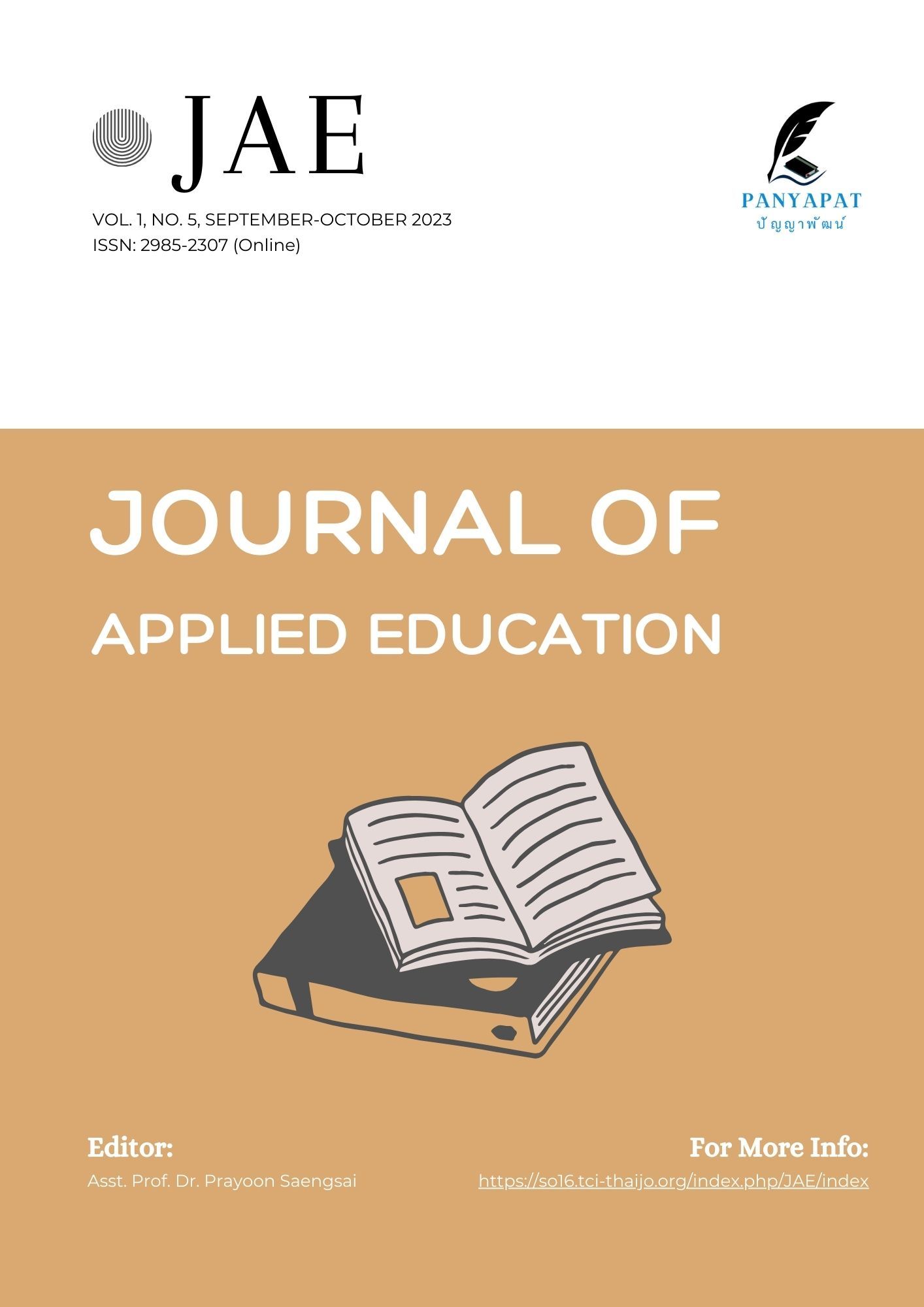The Development of Reading Skills Aloud for True Diphthongs and Improper Diphthongs by Using Skill Exercises for Students in Grade 6, Ban Bo Luang School, Hot District, Chiang Mai Province
Main Article Content
Abstract
This article aimed (1) to compare reading skills aloud in diphthongs before and after learning by using exercises; and (2) to study the opinions of grade 6 students toward learning activities. The sample group was Grade 6 students at Ban Bo Luang School by using a specific selection method, pre-experimental research of model with using one group pre-test post-test design. The research tools were learning management plans, exercises, pre- and post-tests and a questionnaire on students' opinions towards learning activities. The data were analysis including mean, standard deviation and percentage. The results of the research were as follows Comparison of reading skills aloud diphthongs by using exercises of grade 6 students at Ban Bo Luang School. There was a result of reading aloud diphthongs of the students before learning that the mean from everyone were equal 9.87. The number of students who read diphthongs aloud had a total of 16 people with the highest ability equal to 103 points, representing 85.83 percent, with the lowest ability equal to 67 points, representing 55.83 percent. In summary, the students' ability to read aloud diphthongs after class had the mean from everyone equal 14.18. The results of students' opinions towards learning by using learning activities were as follows: overall, it was found that the students' opinions on learning by using learning activities had the highest average level. When considering each issue, it was found that the students' opinions on the teacher's learning were a good example for the students with the highest mean. Followed by students' opinions on teacher learning, having many main teaching techniques and teachers having good teaching skills with the highest mean. The students' opinions towards learning were good teacher interaction with the highest mean.
Article Details

This work is licensed under a Creative Commons Attribution-NonCommercial-NoDerivatives 4.0 International License.
References
กรมวิชาการ. (2559). พระราชบัญญัติการศึกษาแห่งชาติ พุทธศักราช 2542. กรุงเทพฯ: โรงพิมพ์คุรุสภาลาดพร้าว.
ณัฐวรรณ นิธิสมบัติสถิต, รังสรรค์ มณีเล็ก และ สุกลรัตน์ มิ่งสมร. (2564). การพัฒนาชุดฝึกทักษะการอ่าน เขียนคําควบกล้ำ ชั้นประถมศึกษาปีที่ 3 โรงเรียนบ้านแม่เกาะ สํานักงานเขตพื้นที่การศึกษาประถมศึกษาแม่ฮ่องสอน เขต 2. วารสารการบริหารนิติบุคคลและนวัตกรรมท้องถิ่น, 7(10), 207-218.
ดุษฎีพร ชำนิโรคศานต์. (2526). ปัญหาการใช้ภาษาไทย. กรุงเทพฯ: กองวรรณคดีและประวัติศาสตร์ กรมศิลปากร.
พระบาทสมเด็จพระเจ้าอยู่หัวภูมิพลอดุลยเดช. (2556). พระราชบัญญัติการศึกษาแห่งชาติ พุทธศักราช 2542. กรุงเทพฯ: โรงพิมพ์คุรุสภาลาดพร้าว.
ลัดดาวัลย์ พงษ์เขตกรณ์. (2562). การพัฒนาหนังสือส่งเสริมการอ่าน ชุด คล่องแคล่วคำควบกล้ำ เพื่อสร้างเสริมความสามารถในการอ่านออกเสียงคำควบกล้ำ สำหรับนักเรียนชั้นประถมศึกษาปีที่ 5. วารสาร มจร พุทธปัญญาปริทรรศน์, 4(3), 373-388.
ศรีประภา ปาลสุทธิ์. (2523). การสร้างแบบฝึกการอ่าน ร ล ว ควบกล้ำ สำหรับชั้นประถมศึกษาปีที่ 5. (ศึกษาศาสตรมหาบัณฑิต, มหาวิทยาลัยเกษตรศาสตร์).
สุดารัตน์ เอกวาณิช. (2520). การสร้างแบบฝึกการอ่าน ร ล ว ควบกล้ำ สำหรับชั้นประถมศึกษาปีที่ 4. (ครุศาสตรมหาบัณฑิต, จุฬาลงกรณ์มหาวิทยาลัย).
แสงระวี ณรงคะชวนะ. (2542). การสร้างชุดการสอนการอ่านจับใจความสำคัญ สำหรับนักเรียนชั้นประถมศึกษาปีที่ 4. กรุงเทพฯ: มหาวิทยาลัยรามคำแหง.
